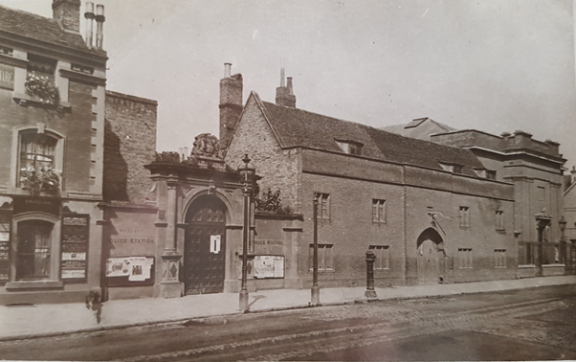
From its beginnings in 1209 up to the 1900s, Cambridge University was an entirely male institution. Not only were the students all men (and mostly upper class), but so too were the lecturers – and until the late 1800s, lecturers were even forbidden from marrying.
Women were not allowed to study at the University for most of its 800 year history. Girton College was founded as the first women’s college in 1869, but women were still barred from actually graduating, and therefore receiving their degrees, until 1948.
Up until the late 1800s, this gave Cambridge an almost unique demographic profile. On the one hand was the town: very small (barely 10,000 people in 1800), working class, with many of the residents employed by the University as cooks, cleaners and tradesmen. On the other hand was the University – entirely male, and almost entirely upper class. The University in this period had total control over the town due to the powers granted to them by their royal charter: their own police force, their own laws, and even their own prison – the notorious Spinning House.
During the Victorian period, the University leaders felt that they had an obligation to uphold the moral standards of their students by limiting their exposure to the vices of the townspeople. Afterall, these were the sons of the most important people in society, and destined to be leaders of the country themselves someday. Within the city centre, no theatres or inns could set up without the permission of the Vice-Chancellor. The reason that the railway station is located so far out of the city is because the University leaders didn’t want the students to be corrupted by easy access to the pleasures of London.
If students (or lecturers for that matter) wanted some illicit kicks, they could visit the working class villages outside Cambridge and away from the University’s jurisdiction. At Chesterton and Barnwell we have records of brothels, bear baiting, cock fighting and bawdy plays. Barnwell was for a long time Cambridge’s “red light district”, and some residents may still remember lap dancing clubs behind the Grafton Centre.
In the city centre, the responsibility for maintaining and policing the streets fell to the university proctors, a proto-police force. They operated a part-prison, part-workhouse, part-hostel called The Spinning House on St Andrew’s Street. Proctors had a particular obsession with stopping their students mixing with working-class women: if a young woman was found by the proctors in the city centre after night, she was at real risk of being arrested for prostitution. After all, why else would young women be out in the city centre after dark, unless they were trying to corrupt the undergraduates?
The Spinning House, demolished in 1894
The Spinning House committal books list the names of 1,550 women and girls who were arrested by the proctors and sent to the Spinning House between 1823 and 1894. Most of these girls were teenagers, some as young as 14; many were from the working class suburbs of Chesterton and Barnwell. Women who were sent to the Spinning House were not charged with anything – prostitution wasn’t actually a crime in this period. Most were held for a night and then released, but some stayed in prison for as long as a month. Conditions were infamous, with poor sanitation and barely more than a platform to sleep on. Several court cases were brought by women who felt they had been wrongfully imprisoned; on occasion, riots occurred when townspeople tried to break women out. Exposés in national newspapers about the terrible conditions added to the controversy. Eventually The Spinning House was closed and demolished in in 1894, and responsibility for policing prostitution passed to the municipal police force.
Hobsons House, a former police station built on the site
Whilst it was undoubtedly hard to be a woman in Victorian society, the court cases and newspaper articles show how the women fought back, demanding their right to walk in the city without fear of arrest, and forming bonds and support networks with other women in The Spinning House.
Thankfully the University is a lot less heavy handed in trying to police the social life of their students and the local population these days!
John Mason – Volunteer
Further reading:
Oswald, J: The Spinning House girls: Cambridge University’s distinctive policing of prostitution, 1823–1894, Urban History, Vol. 39, No. 3 (August 2012), pp. 453-470
